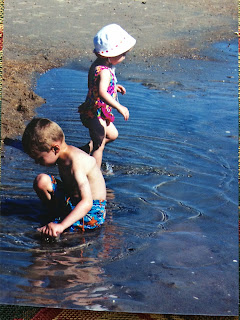 |
| John Robert Graf ca. 1940 |
John Robert Graf was my mom’s cousin, 16 years older than she was. He registered for the draft when he was a 19-year-old student. I remember my mom telling me he was a conscientious objector during World War II but that he participated in the war without going into combat. She also said that he had gone missing in the Pacific Ocean.
Although nothing in my research specifically confirmed that he was a conscientious objector, I choose to believe that he was, based on my mom’s comments and the fact that his family was Seventh Day Adventist, sometimes considered a “peace church.” Some research in the Fold3 database has helped me piece together how John Graf served in the war, how he went missing, and how he fits this week’s prompt, “Air.”
John Robert Graf was a pilot in the 17th Photo Reconnaissance Squadron, 4th Photo Reconnaissance Group of the U.S Army Air Force. Reconnaissance pilots were called “Photo Joes,” and after reading about them I have a sincere respect for how John served his country in the second world war.
 |
| Photo from the P-38 National Association and Museum |
“Photo Joes” like John were the advance eyes of the fighting men. Their job was to fly over enemy territory and take pictures of the location, activities and movements of the enemy, either before or after a raid. The recon pilots flew alone, with no guns to defend themselves. If they were spotted, they had to rely on speed and elevation to outrun their pursuers; they had no guns to defend themselves.
This was the life John led in the army. But somewhere along the line he met an army nurse named Maurine. I don’t know much about their life together but I do know John and Maurine got married because I have a picture of them.
 |
| Wedding party of John Robert Graf and Maurine Betty Halbe Place and date unknown |
Back to the war and photo reconnaissance. John’s story ends sadly as so many men’s stories did in World War II. On about February 22, 1945 John took off from Molotai Island on a combat photo reconnaissance mission to Tarakan, North Borneo.
On Feb 23 a bomber on a mission to Tarakan reported seeing sea dye from a life raft along the flight path that John would have taken. An emergency rescue group in the area was notified and planes were sent out, but they could not make the visual sighting because of adverse weather conditions. A month later an official Missing Crew Member Report was filed about John Graf.
 |
| Manilla American Cemetery and Memorial |
John’s sacrifice is memorialized at the Manila American Cemetery and Memorial in the Philippines. He is listed among the 36,286 names of the missing. So far I haven’t found an obituary for him. But hopefully this memorializes him in a small way. John Robert Graf, thank you for your sacrifice and your service in the air.
Watch a YouTube video that sings the praises of the World War 2 Reconnaissance Pilot. If only John and Maurine’s story could have turned out the way this video did.













